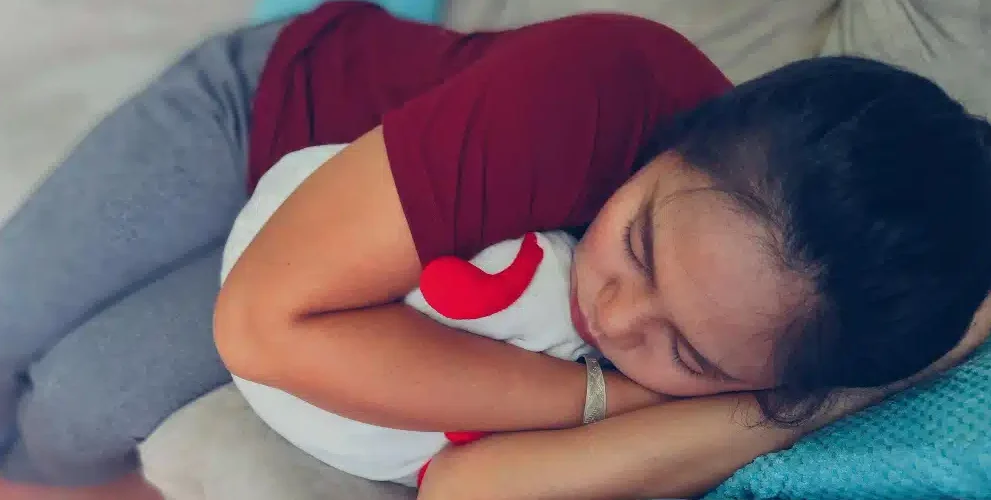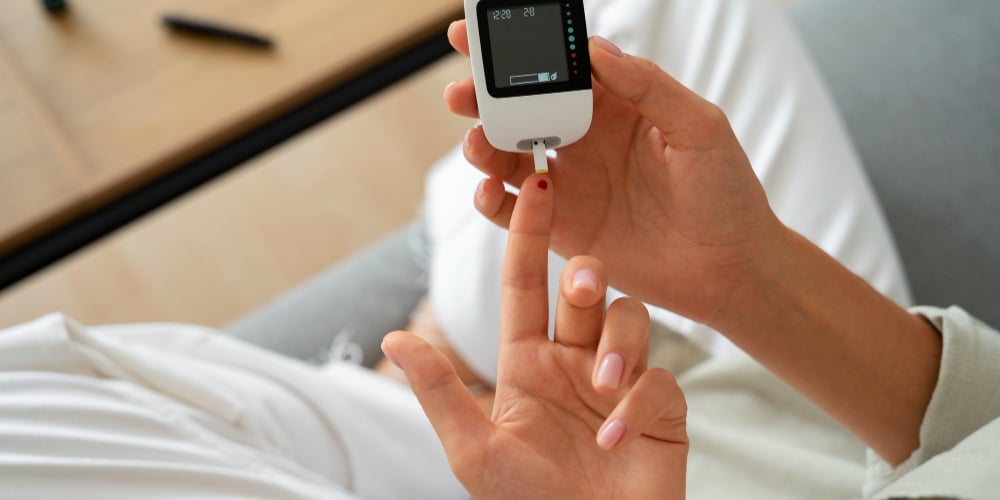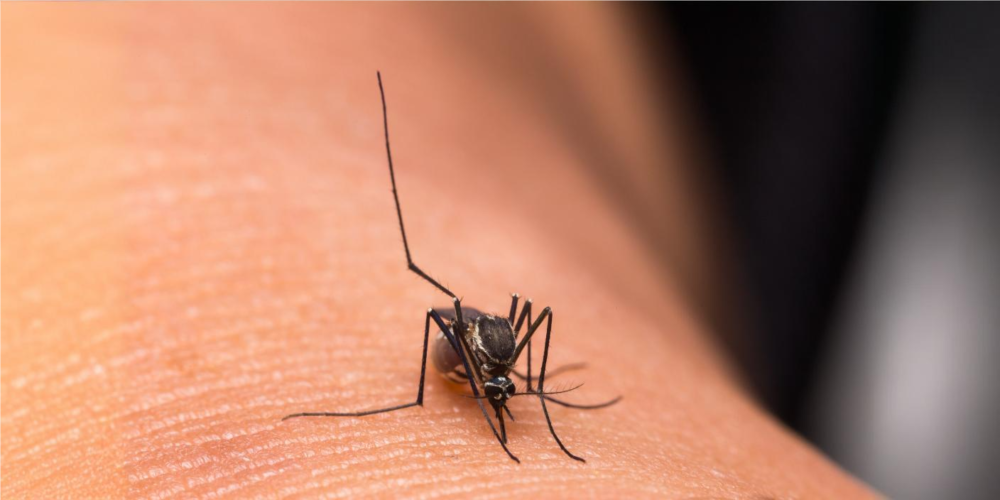Latest
Paid menstrual leave policy: A leap towards equality or a source of new biases?
The Karnataka government’s recent decision to grant one day of paid period leave every month has reignited public debate on whether menstrual leave is a step towards equality or a potential source of new biases at work
Author
Author
- admin / 4 weeks

- 0
- 10 min read

Author
When 23-year-old journalist Kulsoom Faiz experiences her menstrual cycle, work becomes a struggle against her own body. “I have endometriosis, and my first couple of days are purely filled with agony. I am paralysed; I can’t move, yet I’m expected to perform at the same level as everyone else,” she says.
For Kulsoom, menstruation is not just a monthly occurrence but a physically and emotionally draining experience that is rarely accommodated in professional environments. “I consume a lot of medically prescribed pills just to get through the day,” she says.
“It’s unfair that our performance is always compared to a male standard. Gender biases should not exist in the 21st century. This is something so basic that we shouldn’t even have to fight for,” she says, adding that “Menstrual leave is something every person who bleeds deserves because there’s so much pain, so much agony one personally deals with.”
Her frustration reflects a larger reality for many women in India, where workplaces often fail to recognise the physical challenges that accompany menstruation. “We are past that system,” Kulsoom insists. “We should be more inclusive, more humane, and build a society where everyone can grow.”
There are several women like her, who have been silently enduring period-related discomfort—from crippling pain to heavy bleeding—while navigating demanding work schedules. Now, the Karnataka government’s recent decision to grant one day of paid menstrual leave every month has reignited public debate on whether menstrual leave is a step towards equality or a potential source of new biases at work.
What has Karnataka done?
The Karnataka cabinet approved one day of paid menstrual leave every month for women working across both public and private sectors. Chief Minister Siddaramaiah called it a step towards “a more humane, understanding, and inclusive workplace.” The Menstrual Leave Policy 2025 ensures that women experiencing menstrual discomfort can take one paid day off each month. Karnataka’s decision makes it one of the few Indian states to extend menstrual leave beyond government employees to women working in private companies and the informal sectors.
While Bihar and Odisha already provide menstrual leave, these benefits apply only to government employees. Kerala offers menstrual leave to female students and staff in some universities and government institutions. Karnataka’s move is the first to apply across all sectors, recognising that the majority of working women in India are employed in the private or informal workforce.
Even without a national law, several private companies have adopted menstrual leave policies. For instance, Zomato offers up to 10 days of paid menstrual leave per year, while Acer India allows one paid day every month. Other companies like Byju’s, Swiggy and Culture Machine have also implemented similar measures, reflecting a slow but growing recognition of menstrual health as an essential workplace issue.
Globally, menstrual leave remains rare and inconsistently implemented. Japan introduced menstrual leave in 1947, although it is often unpaid and rarely used due to workplace stigma. South Korea permits one day of unpaid leave each month, while Indonesia offers two days of paid leave. Zambia also allows one paid day off per month for menstruation. In Europe, Spain became the first country to legalise paid menstrual leave in 2023, joining others like Taiwan and Vietnam.
Why paid menstrual leave matters for women
Shriya Koul, a 23-year-old business development executive, feels menstrual leave is an essential support for working women. “The first two days are extremely painful,” she says. “Sitting at my desk for hours only makes it worse. It becomes hard to concentrate when I’m in pain. Managing hygiene is another challenge, and commuting makes everything more difficult. There are times when no cabs or autos are available, and I have to take the metro despite the discomfort; it’s exhausting.”
In fact, a 2019 study conducted in the Netherlands found that one in five young women (20 per cent) reported missing school or university due to period pain, while two in five (41 pc) said pain affected their concentration or performance. Overall, the study estimated that women lost nine days of annual productivity due to menstrual pain.
Calling out the broader debate around menstrual leave, Rituparna Chatterjee, Deputy Asia Editor at The Independent, notes that discussions often oversimplify the issue and fail to reflect the diversity of experiences among menstruators. She emphasises that not all women face the same challenges during menstruation. Some may experience intense pain, endometriosis, or PCOD, while others manage without significant discomfort.
“Every menstruator’s experience is different as they navigate life and work,” she explains. Chatterjee points out that women have historically worked in a variety of roles, from offices to fields, brick kilns, and restaurants, often managing responsibilities despite physical pain. This, she says, has invisibilised their struggles, particularly for those balancing paid work with household duties and childcare.
She stresses the economic dimension of menstrual leave, highlighting that for many women, missing work is not a minor inconvenience but a matter of livelihood. She cites extreme cases, such as sugarcane workers in Maharashtra who underwent hysterectomies to avoid losing wages during menstruation. “We cannot approach this debate with ableist arguments. The leave is available for those who need it, and for those who do not, they do not have to take it. This is a very positive step forward,” she asserts.
Chatterjee also draws attention to the role of the state in supporting women’s work, noting that policies in states like Bihar have long recognised the need for menstrual leave, and other countries, including Spain, have similar measures.
But could it backfire against women?
While Karnataka’s move has been widely celebrated as progressive, some people believe that separate menstrual leave policies may have unintended consequences. Executive coach and leadership consultant, Vineeta Yadav, argues that while the intent is positive, the approach may not be the most inclusive.
“Everyone has health issues, women, men, everyone,” she says. “Creating a separate leave policy just for menstruation may not be inclusive, even for women. Think of women in different life stages; those going through menopause, for instance, have their own challenges. Instead of separate leave, flexibility would make more sense. Let women work from home during those days.”
Yadav also raises concerns about the hiring process. “Most hiring managers may not say it aloud, but they factor these policies in. If women get 12 extra leave days a year, some employers might hesitate to hire them. The intent is good, but the outcome could backfire,” she warns.
For her, the focus should be on creating better and more flexible workplaces. “Many offices, especially in remote areas, lack even basic facilities like toilets for women. Improving infrastructure and offering flexible work-from-home options would help everyone,” she adds. “Many people have migraines, mental health issues, or chronic pain. Why not build a system where everyone benefits?”
Menstrual leaves: an old debate
This is not the first time this debate has been reignited. In 2020, Congress MP Shashi Tharoor posted on ‘X’ in support of menstrual leave on the occasion of International Women’s Day, sparking sharp reactions on social media.
Do you support Menstrual Leave For Women at Public& Private Workplaces? Join this initiative of @ProfCong by signing this Petition on https://t.co/qC1xqkEyev. Let’s create gender inclusive workplaces in India. Sign the Petition: https://t.co/mw6iWjuBmT #WomensDay2020
— Shashi Tharoor (@ShashiTharoor) March 8, 2020
Most of the criticism came from women who opposed the idea. Journalist Barkha Dutt, for instance, responded: “No @ShashiTharoor, menstrual leave ghettoises women, becomes one more excuse to close certain professional doors on women, and treats the monthly period as a grand event instead of routine biology.”
NO @ShashiTharoor menstrual leave ghettoises women, becomes one more excuse to close certain professional doors on women and treats the monthly period as a grand event instead of routine biology. Here’s a piece I wrote in @washingtonpost on thi this https://t.co/OKqDslqpuZ https://t.co/f6N6sDS8Lw
— barkha dutt (@BDUTT) March 8, 2020
Its advocates, like Chatterjee, still insist it is necessary. Addressing concerns that menstrual leave could discourage employers from hiring women, Chatterjee compares it with maternity leave. She stresses that bleeding is a life experience, much like childbirth, and it should not make a woman unemployable.
Chatterjee points out the need for workplace flexibility and inclusivity. Women with severe conditions, such as endometriosis or PCOD, should have the option to rest, while flexible work hours or work-from-home arrangements can support others. She stresses that work is not the only responsibility women have in a day, and providing relief during menstruation helps women manage childcare, elderly care, and household tasks.
Chatterjee also highlights the importance of considering rural and underserved populations. “Many menstruators are school-going girls in village schools or workers in factories who lack access to good sanitary products. Policies must reach beyond urban workplaces to ensure that women are not discriminated against and their daily lives are made easier,” she says. She stresses that menstrual leave, combined with better access to menstrual hygiene products, is a crucial step toward creating equitable and supportive workplaces for all women.
Experts says a days’ leave may not be enough
Dr Swati Rai, Consultant Gynaecologist and Laparoscopic Surgeon at Motherhood Hospitals, Noida, highlights that menstrual experiences differ significantly among women and cannot be generalised. She explains that menstruation is a normal physiological process that occurs from around 10–12 years of age until menopause.
However, for women with conditions such as PCOS, endometriosis, or adenomyosis, menstrual periods can be extremely painful, a condition known as dysmenorrhea. “It starts sometimes before the periods, during the periods, and sometimes even after the periods,” she says. “These are medical situations where women need expert advice and proper treatment. Just giving menstrual leave is not the answer, and it will not solve the purpose.”
Dr Rai raises concerns about the limited duration of menstrual leave offered by many organisations. “Many startups and MNCs give just one day of leave. But when a woman is suffering from these conditions, she may need rest for five to seven days straight. How is one day going to help?” She points out that for many women, menstruation is not disruptive, and they remain fully active. “We cannot generalise; giving one day of leave is not sufficient, especially when conditions like PCOS are increasingly common. The incidence has become almost epidemic in India,” she notes.
In India, now about one in every five women suffer from PCOS—a complicated hormonal condition that impacts reproductive, hormonal, and metabolic health. Endometriosis, another condition that can cause painful and uncomfortable periods in women, has been called a “public health disorder” that affects “~ 42 million women in India.”
She also stresses the importance of awareness and medical support in the workplace. “Women need to be properly informed about these conditions. Organisations can collaborate with gynaecologists to provide monthly checkups or awareness sessions to track and support female employees,” Dr Rai suggests.
Regarding practical solutions in the workplace, she recommends creating inclusive and supportive environments. “For women experiencing extreme pain, offices should have dedicated rooms where they can relax, use a heating pad, or even take a short break with tea. There should also be a counsellor or guide with basic medical knowledge who can assist women in managing sudden pain or taking a short rest,” she says. Dr Rai emphasises that leave policies alone are not enough; medical management, workplace support, and awareness are crucial to ensure women can work comfortably during menstruation.
Also read: What is PCOS? The hidden struggle of one in five Indian women | Explainer










